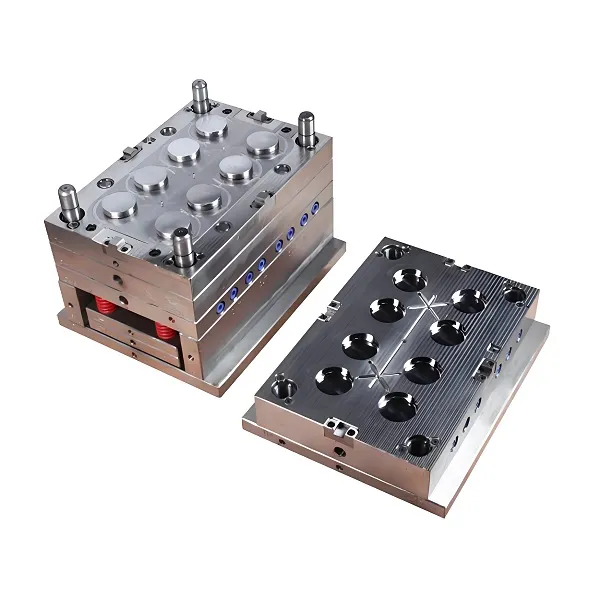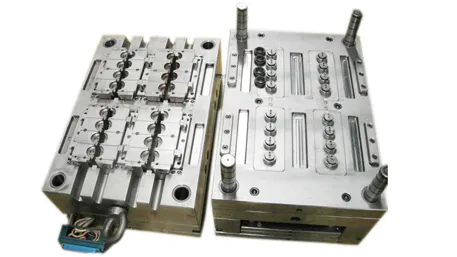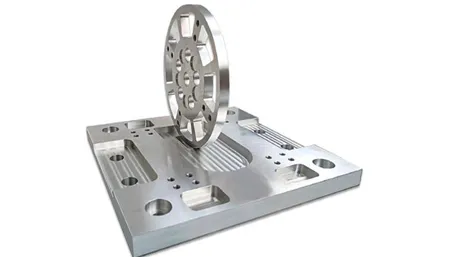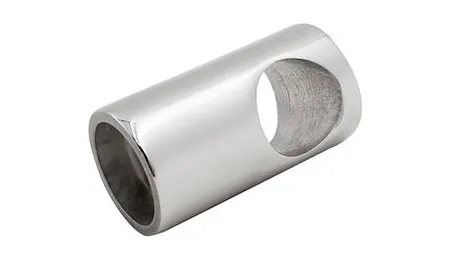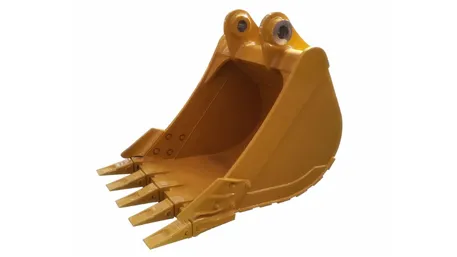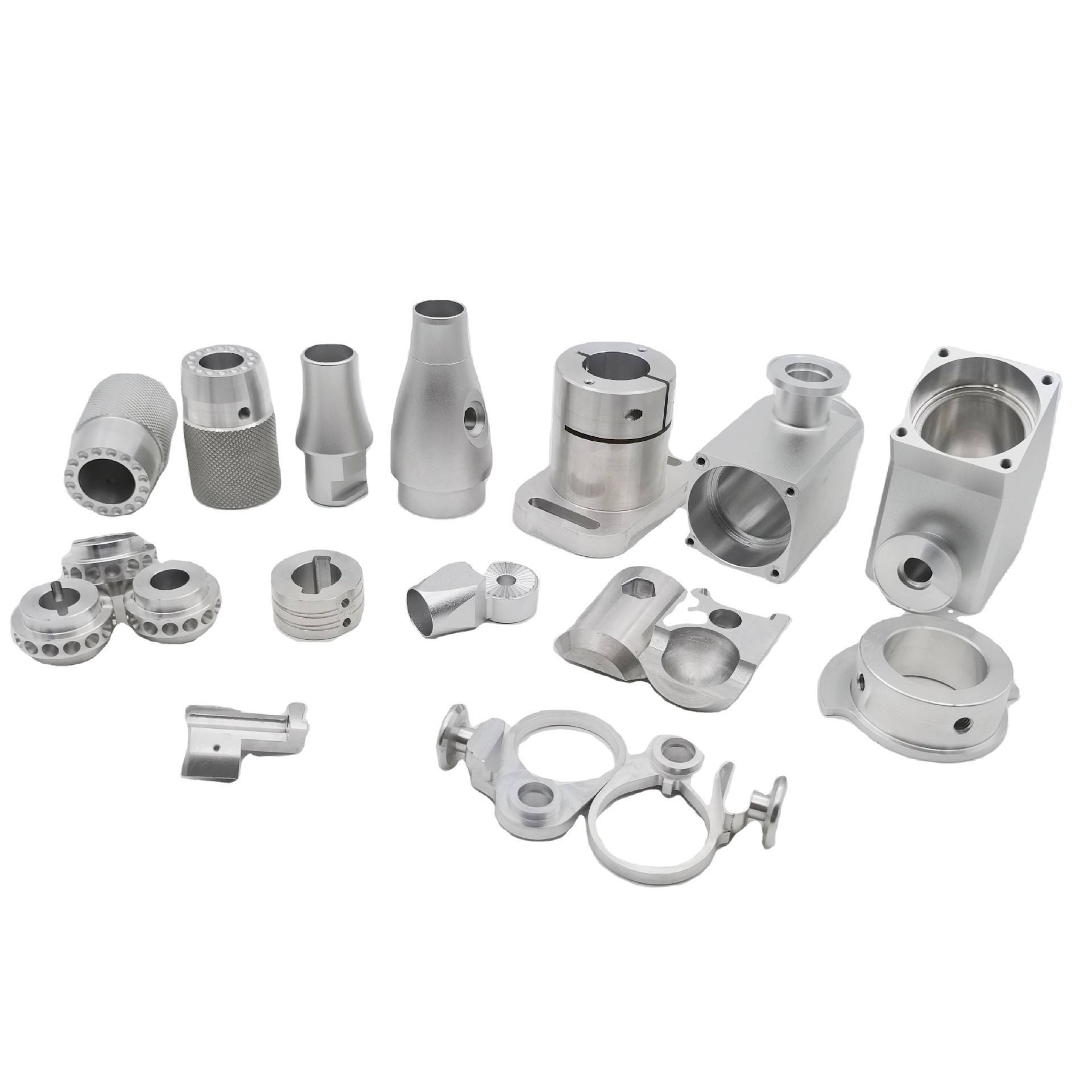In the aerospace field, the high – performance, lightweight, and high – reliability of components are crucial for flight safety and efficiency. As a key manufacturing form, die – castings have performance requirements far exceeding ordinary industrial standards. Traditional standardized die – castings cannot meet the harsh service environment requirements of aerospace. However, custom – made aerospace die – castings, with data – driven precise design, cutting – edge manufacturing processes, and extreme quality control, achieve a leap from “basic manufacturing” to “aerospace – grade quality”. The following will deeply analyze how custom – made aerospace die – castings help upgrade the performance of aerospace equipment from aspects such as customization advantages and core processes.
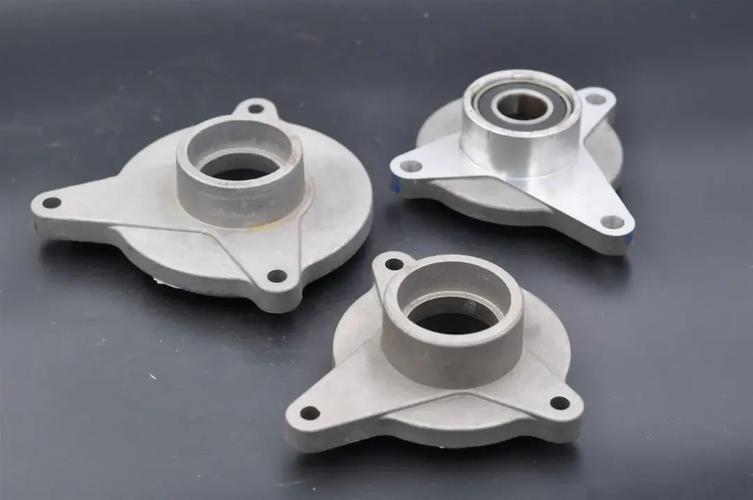
I. Why Can’t Standardized Die – castings Meet the Needs of Aerospace Manufacturing?
Q&A: What are the core advantages of custom – made aerospace die – castings?
Standardized die – castings have three prominent problems in aerospace applications:
Unqualified performance indicators: General – purpose die – castings cannot meet the service requirements of aerospace components under high – temperature, high – pressure, and high – dynamic – load conditions. Their tensile strength fluctuates greatly (±20MPa), and their fatigue life is less than 500 hours, making it difficult to withstand the extreme working conditions of aerospace engines.
Limited dimensional accuracy: Mold accuracy and traditional die – casting processes result in key – dimension tolerances as high as ±0.2mm, failing to meet the micron – level assembly accuracy requirements of aerospace components and affecting aerodynamic performance and system stability.
Material and structural limitations: There is a lack of material optimization and structural design for the special needs of aerospace, making it difficult to achieve a balance between extreme lightweight and high strength. The weight of components exceeds the ideal value by 15% – 20%, increasing flight energy consumption.
Custom – made aerospace die – castings focus on “aerospace – grade performance customization”:
Adaptation to extreme working conditions:
Aerospace engine components: Using high – performance materials such as titanium alloys and nickel – based superalloys, after customized processing, they can maintain more than 70% of their room – temperature strength at 800°C, and the fatigue life is extended to more than 5000 hours, meeting the requirements of long – term high – speed operation of engines.
Aircraft body structural components: Through topological optimization design, high – strength aluminum alloy die – castings are used. Under the premise of ensuring structural strength, thin – walled structures with a wall thickness of 1 – 1.5mm are achieved, reducing the weight by 30% and improving the fuel economy of the aircraft.
Data – driven precise design: Combining aerospace dynamics and thermodynamics simulation data, the structural parameters of die – castings are accurately calculated, and the layout of ribs, fillet radius (R0.3 – 1.5mm), and wall – thickness distribution are optimized, reducing the stress – concentration factor by 40% and ensuring the reliability of components under complex loads.
Q&A: What are the core advantages of custom – made aerospace die – castings?
Standardized die – castings have three prominent problems in aerospace applications:
Unqualified performance indicators: General – purpose die – castings cannot meet the service requirements of aerospace components under high – temperature, high – pressure, and high – dynamic – load conditions. Their tensile strength fluctuates greatly (±20MPa), and their fatigue life is less than 500 hours, making it difficult to withstand the extreme working conditions of aerospace engines.
Limited dimensional accuracy: Mold accuracy and traditional die – casting processes result in key – dimension tolerances as high as ±0.2mm, failing to meet the micron – level assembly accuracy requirements of aerospace components and affecting aerodynamic performance and system stability.
Material and structural limitations: There is a lack of material optimization and structural design for the special needs of aerospace, making it difficult to achieve a balance between extreme lightweight and high strength. The weight of components exceeds the ideal value by 15% – 20%, increasing flight energy consumption.
Custom – made aerospace die – castings focus on “aerospace – grade performance customization”:
Adaptation to extreme working conditions:
Aerospace engine components: Using high – performance materials such as titanium alloys and nickel – based superalloys, after customized processing, they can maintain more than 70% of their room – temperature strength at 800°C, and the fatigue life is extended to more than 5000 hours, meeting the requirements of long – term high – speed operation of engines.
Aircraft body structural components: Through topological optimization design, high – strength aluminum alloy die – castings are used. Under the premise of ensuring structural strength, thin – walled structures with a wall thickness of 1 – 1.5mm are achieved, reducing the weight by 30% and improving the fuel economy of the aircraft.
Data – driven precise design: Combining aerospace dynamics and thermodynamics simulation data, the structural parameters of die – castings are accurately calculated, and the layout of ribs, fillet radius (R0.3 – 1.5mm), and wall – thickness distribution are optimized, reducing the stress – concentration factor by 40% and ensuring the reliability of components under complex loads.
II. How Do the Core Processes of Custom – made Aerospace Die – castings Achieve Performance Breakthroughs?
- Digital Simulation and Optimal Design
Multi – physical – field joint simulation: Using software such as ANSYS and Abaqus to simulate the performance of die – castings under the coupled action of aerodynamic loads, thermal cycles, vibrations, etc., during the entire flight cycle. Optimize the structural design, reducing material redundancy by 25% and increasing structural stiffness by 18%.
Parametric mold design and optimization: With the help of mold – flow analysis software (such as Moldflow), accurately simulate the filling and solidification processes of aluminum liquid in die – casting. Optimize the gate position, exhaust system, and cooling – water – channel layout, controlling the filling time within 0.02 – 0.06 seconds, reducing the number of mold debugging times by 60%, and shortening the development cycle by 35%. - Innovation of Advanced Die – casting Processes
Vacuum differential pressure casting technology: By controlling the cavity vacuum degree (< 3kPa) and pressure difference (0.3 – 0.5MPa), the alloy liquid fills the mold smoothly under low pressure and crystallizes and solidifies under high pressure. This significantly reduces the internal porosity (< 0.1%) and shrinkage – porosity defects of die – castings, with a density of over 99.8%, meeting the high – reliability requirements of aerospace components.
Semi – solid die – casting process: Heat the alloy to the solid – liquid two – phase region and use the thixotropic semi – solid slurry for die – casting. The formed parts have fine and uniform grains (average grain size < 15μm), with a 30% increase in tensile strength and a 20% increase in elongation, especially suitable for the manufacture of complex thin – walled structural components in aerospace.
Ultra – high – pressure die – casting technology: Use an ultra – high pressure of 300 – 500MPa for die – casting, enabling the alloy liquid to quickly fill the mold cavity and achieve the formation of 0.8mm ultra – thin – wall structures. At the same time, the grains are refined, and the comprehensive mechanical properties of the components are improved, meeting the lightweight design requirements of aerospace. - Full – process Data Closed – loop Control
Programming stage: Based on the simulation and optimization results, automatically generate die – casting process parameters, precisely set the mold temperature (150 – 200°C), injection – speed curve (slow injection 0.2m/s, fast injection 40m/s, pressure boosting 400MPa), ensuring the accuracy and consistency of process parameters.
Production execution: Deploy high – precision sensors to collect more than 80 parameters such as pressure, temperature, and displacement in real – time. Use AI algorithms to analyze the data in real – time. When the parameter fluctuation exceeds the threshold (such as the aluminum – liquid temperature fluctuating by > 2°C), the system automatically adjusts the process parameters to achieve intelligent control of the die – casting process. The qualified product rate is increased from 78% to 96%.
Post – treatment strengthening:
Heat – treatment optimization: According to the characteristics of different aerospace materials, adopt solution and aging treatment (for example, for titanium alloy, solution treatment at 950°C for 2 hours and aging treatment at 550°C for 8 hours), significantly improving the strength and hardness of the material and eliminating more than 90% of the residual stress.
Precision machining: Use a five – axis machining center to finish – machine die – castings. Control the key – dimension accuracy within ±0.005mm and the surface roughness Ra≤0.4μm, meeting the high – precision assembly requirements of aerospace components.
III. Quality Control: Stringent Verification of the Whole Chain from Materials to Finished Products
- Multi – dimensional Performance Testing System
Stringent material – level screening:
Spectral analysis: Detect the composition of materials such as titanium alloys and nickel – based alloys to ensure that the content of key elements meets aerospace standards (for example, in TC4 titanium alloy, the Ti content is 88 – 90%, and the Al content is 5.5 – 6.8%). Strictly control impurity elements (such as Fe > 0.3%), and unqualified materials are directly scrapped.
Metallographic inspection: Use a high – power microscope to grade the grain size of materials (≥8), and detect defects such as inclusions and porosity to ensure that the material structure is uniform and dense.
Finished – product – level testing:
Mechanical property testing: Use a universal material testing machine to conduct mechanical property tests such as tension, compression, and bending on die – castings. The coefficient of variation of tensile strength is required to be < 3%; the fatigue test simulates 10⁸ cycles of loading to ensure that no cracks occur in the components.
Non – destructive testing: Use a variety of non – destructive testing techniques such as X – ray computed tomography (CT), ultrasonic flaw detection (UT), and eddy – current testing (ET) to comprehensively detect internal and surface defects of die – castings. The detection accuracy reaches the 0.05mm level to ensure zero – defect delivery.
Environmental adaptability testing: Place die – castings in extreme environments such as high and low temperatures (-60°C – 120°C), humidity, and salt spray for testing. The performance degradation under extreme conditions is required to be no more than 5%, meeting the requirements of complex service environments in aerospace. - Intelligent Defect Prevention Technology
The first – piece thirteen – inspection system: A professional team consisting of 13 people, including mold engineers, die – casting operators, material engineers, and quality inspectors, strictly inspects 35 indicators of the first – piece die – casting, such as mold status, material batch, process parameters, and key dimensions, to ensure the accuracy of the production process.
AI vision and ultrasonic phased – array full – inspection: Use a linear array camera combined with deep – learning algorithms to complete the detection of surface defects of die – castings within 0.2 seconds, and it can identify 0.1mm – level micro – cracks. At the same time, use ultrasonic phased – array technology to detect internal defects, achieving accurate positioning and quantitative analysis of defects. The missed – detection rate is less than 0.001%, meeting the zero – defect acceptance standard in aerospace.
IV. How to Balance Efficiency and Cost in Small – batch Customization?
Q&A: Does high – precision customization mean high cost?
Through three major process innovations, the customization cycle is shortened by 45% and the cost is reduced by 30%:
Modular mold and process library: Establish 10 major modular mold and process libraries for aerospace engines, aircraft bodies, landing gears, etc. The reuse rate of molds and process parameters for similar die – castings reaches 80%, reducing the mold development cost by 45% and the development cycle from 60 days to 30 days.
Rapid – response flexible production: Adopt a robotic automated production line, combined with a quick – change mold device (mold – change time < 8 minutes) and an intelligent warehousing system, to achieve flexible production of multiple varieties in small batches (50 – 500 pieces), with the equipment utilization rate increased to 90%.
Digital twin and predictive maintenance: Create a digital – twin model for each set of molds and die – casting equipment, monitor the equipment operation status and mold wear in real – time, predict equipment failures and mold life through big – data analysis, carry out maintenance and replacement in advance, reducing unplanned downtime by 40% and maintenance costs by 22%.
Q&A: Does high – precision customization mean high cost?
Through three major process innovations, the customization cycle is shortened by 45% and the cost is reduced by 30%:
Modular mold and process library: Establish 10 major modular mold and process libraries for aerospace engines, aircraft bodies, landing gears, etc. The reuse rate of molds and process parameters for similar die – castings reaches 80%, reducing the mold development cost by 45% and the development cycle from 60 days to 30 days.
Rapid – response flexible production: Adopt a robotic automated production line, combined with a quick – change mold device (mold – change time < 8 minutes) and an intelligent warehousing system, to achieve flexible production of multiple varieties in small batches (50 – 500 pieces), with the equipment utilization rate increased to 90%.
Digital twin and predictive maintenance: Create a digital – twin model for each set of molds and die – casting equipment, monitor the equipment operation status and mold wear in real – time, predict equipment failures and mold life through big – data analysis, carry out maintenance and replacement in advance, reducing unplanned downtime by 40% and maintenance costs by 22%.
V. Core Considerations for Choosing Custom – made Aerospace Die – castings
Data transparency and traceability: The supplier should provide a complete simulation analysis report, die – casting process parameter log, full – size inspection report (including CT scan data), and material traceability information to ensure that the performance and quality of each die – casting can be traced throughout the process.
Technical strength and qualification certification: Have advanced process capabilities such as vacuum differential pressure casting and semi – solid die – casting, and possess authoritative qualifications in the aerospace field such as AS9100 aerospace quality management system certification and NADCAP special process certification to ensure meeting the high – standard requirements of aerospace manufacturing.
Response speed and collaborative development ability: The delivery cycle from drawing confirmation to sample is ≤ 30 days. Be able to conduct in – depth collaborative development with aerospace prime contractors and have the ability to quickly respond to the design requirements of new aerospace materials and new structures.
Data transparency and traceability: The supplier should provide a complete simulation analysis report, die – casting process parameter log, full – size inspection report (including CT scan data), and material traceability information to ensure that the performance and quality of each die – casting can be traced throughout the process.
Technical strength and qualification certification: Have advanced process capabilities such as vacuum differential pressure casting and semi – solid die – casting, and possess authoritative qualifications in the aerospace field such as AS9100 aerospace quality management system certification and NADCAP special process certification to ensure meeting the high – standard requirements of aerospace manufacturing.
Response speed and collaborative development ability: The delivery cycle from drawing confirmation to sample is ≤ 30 days. Be able to conduct in – depth collaborative development with aerospace prime contractors and have the ability to quickly respond to the design requirements of new aerospace materials and new structures.
Conclusion
The value of custom – made aerospace die – castings lies in defining “aerospace – grade performance standards” with data and realizing “reliable operation under extreme working conditions” with processes. In the trend of aerospace development towards high – performance, long – life, and lightweight, customized solutions with “data – driven precise design + cutting – edge die – casting processes” are becoming the core force to promote the technological upgrade of aerospace equipment. From the high – temperature components of aerospace engines to the lightweight structures of aircraft bodies, custom – made aerospace die – castings will support “ten – thousand – hour reliability” with “micron – level precision” and lay a solid foundation for safety and performance in every flight.
The value of custom – made aerospace die – castings lies in defining “aerospace – grade performance standards” with data and realizing “reliable operation under extreme working conditions” with processes. In the trend of aerospace development towards high – performance, long – life, and lightweight, customized solutions with “data – driven precise design + cutting – edge die – casting processes” are becoming the core force to promote the technological upgrade of aerospace equipment. From the high – temperature components of aerospace engines to the lightweight structures of aircraft bodies, custom – made aerospace die – castings will support “ten – thousand – hour reliability” with “micron – level precision” and lay a solid foundation for safety and performance in every flight.

